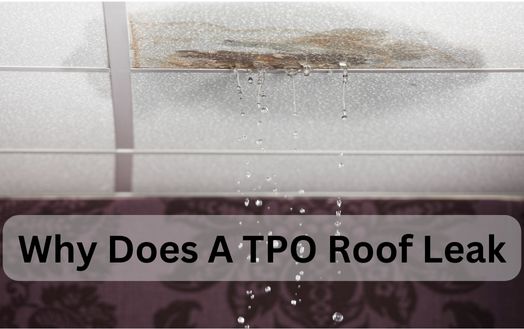
An effective roofing system is crucial for commercial buildings to ensure the safety and longevity of the structure. Among the various options available, thermoplastic polyolefin (TPO) roofing has gained popularity in the roofing industry for its durability, cost-effectiveness, and energy efficiency. However, like any roofing system, TPO roofs may experience issues, such as leaks, that can compromise their function and performance. In this blog, we will explore the common causes of TPO roof leaks, how water penetrates the TPO membrane, and the importance of preventative measures and regular maintenance to protect your investment.
TPO roofing systems are single-ply roofing membranes constructed from ethylene propylene rubber. This thermoplastic polyolefin material offers exceptional resistance to ultraviolet light and chemical exposure, making it an ideal choice for commercial roofs. TPO roofs are commonly used in commercial buildings due to their cost-effectiveness, reflective surface, and ease of installation. The installation process involves heat-welding the seams of the TPO membrane, creating a watertight barrier. With its benefits and popularity in the roofing industry, it’s essential to understand the basics of TPO roofing systems.
TPO roofing systems have become increasingly popular in the commercial roofing industry due to their cost-effectiveness and durability. These roofs consist of thermoplastic polyolefin, a blend of polypropylene and ethylene propylene rubber, known for its high flexibility and resistance to UV rays and chemical exposure. TPO roofs typically feature a white, light gray, or black membrane, allowing for solar reflectivity and energy efficiency.
A TPO roofing system comprises several key components, including the roof deck, insulation, and TPO membrane. The roof deck provides a stable base for the roofing system, while insulation helps with energy efficiency and protection against moisture. The TPO membrane is the outer layer of the roofing system, offering water resistance and protecting the building from the elements.
To ensure the longevity of a TPO roof, proper installation is essential. Roofing professionals heat-weld the seams of the TPO membrane, creating a seamless and watertight barrier. However, improper installation or material defects can lead to issues such as leaks and water damage, compromising the integrity of the commercial building.
A TPO roofing system is composed of several key components that work together to provide a durable and efficient roofing solution for commercial buildings. These components include the roof membrane, roof deck, insulation, and drainage system.
The roof membrane is the outermost layer of the roofing system and is made of thermoplastic polyolefin (TPO) material. It is designed to withstand UV rays, temperature fluctuations, and other environmental factors. The roof membrane plays a crucial role in preventing water infiltration, protecting the building from water damage, mold growth, and structural issues.
The roof deck is the foundation of the roofing system, providing structural support and stability. It is typically made of wood or metal and ensures that the roof membrane is properly anchored and supported.
Insulation is another important component of a TPO roof. It helps to improve energy efficiency by reducing heat transfer and maintaining a comfortable indoor temperature. Insulation also plays a significant role in preventing moisture buildup and condensation within the roofing system.
Lastly, the drainage system is responsible for directing water away from the roof’s surface, preventing water damage and commercial leak repair NJ. Proper drainage is critical for maintaining the integrity of the TPO roofing system and preventing structural damage to the commercial building.
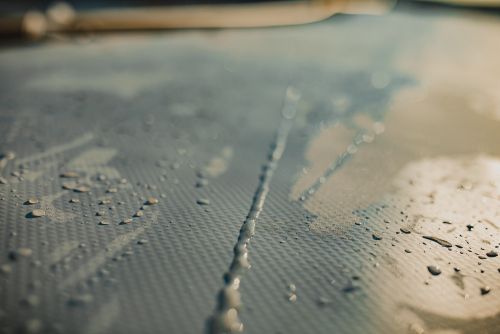
Despite their durability and longevity, TPO roofs may encounter common issues that require prompt attention and commercial roof repair NJ. Addressing these issues in a timely manner is crucial to prevent further damage and costly repairs. Some of the most common issues with TPO roofing systems include surface punctures, membrane peeling or bubbling, seam joint leaks, and water damage. Let’s delve deeper into each of these problems and explore the appropriate repair options.
Surface punctures on TPO roofing membranes can compromise the roof’s integrity, leading to water infiltration and potential damage to the building’s interior. These punctures can occur due to various factors, including foot traffic, falling debris, or sharp objects. It’s crucial to address surface punctures promptly to prevent further damage. Here are some effective repair options:
Membrane peeling or bubbling is a common issue with TPO roofs and is often indicative of installation issues, such as inadequate adhesion or trapped moisture. This problem can arise due to various factors, including excessive heat exposure, improper installation, or material defects. If left unaddressed, membrane peeling or bubbling can lead to water infiltration, causing damage to the roof structure and the building’s interior. Here are some key points to consider:
TPO roof seam joint leaks can occur when the seams, which are heat-welded during installation, degrade over time or were not properly sealed. When water penetrates the seams, it can lead to significant water damage, mold growth, and compromise the structural integrity of the building. Prompt repair of seam joint leaks is essential to prevent further damage. Here are some repair options to consider:
Water damage to TPO roofs can occur due to various factors, including membrane punctures, seam leaks, or drainage issues. When water infiltrates the roofing system, it can lead to severe damage, compromising the building’s structural integrity and creating an environment conducive to mold growth. Addressing water damage promptly is crucial to prevent further deterioration. Consider the following points:
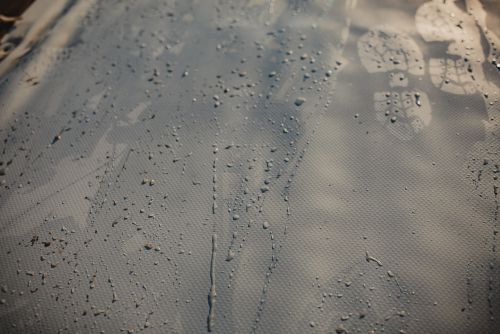
Water penetration through a TPO roof membrane can occur due to various factors, such as membrane defects, seam failures, or drainage issues. Understanding how water infiltrates the roof system is crucial for addressing leaks and preventing water damage. In the following sections, we will explore the importance of regular roof inspections and signs of water damage on TPO roofs, providing valuable insights into detecting and addressing water penetration issues effectively.
Regular roof inspections are vital for identifying early signs of damage, including water penetration, on TPO roofs. Hiring a professional roofing contractor to conduct comprehensive roof inspections can help detect potential issues and address them before they escalate into more significant problems. Here are some key points to consider:
Detecting signs of water damage on a TPO roof is essential for addressing water penetration and preventing further damage to the building. Look for the following signs that may indicate water damage:
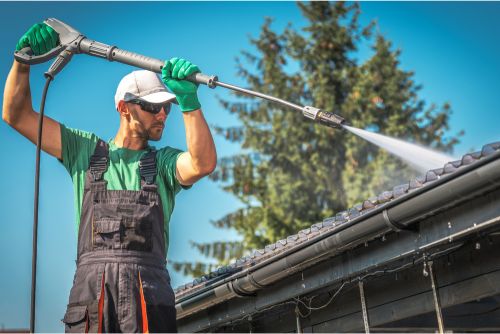
Preventing roofing problems is essential for maintaining the performance and lifespan of a TPO roofing system. Implementing proactive measures and following good maintenance practices can help prevent or minimize potential issues, such as water damage and roof leaks. Let’s explore some preventative measures that building owners and facility managers can take to protect their TPO roof investment.
Regularly cleaning the gutters of your TPO roof is essential for effective water drainage and preventing potential water damage. Clogged or improperly functioning gutters can lead to water overflow, seepage, and damage to the building’s structure. Consider the following points for effective gutter maintenance:
Regular maintenance of the roof surface is crucial for early detection of water damage, simple repairs, and overall roof system maintenance. Here are key points to consider for effective roof surface maintenance:
Flashing repair is essential for preventing water entry points and maintaining the integrity of your TPO roofing system. Flashings are materials, typically metal, used to create a water-resistant barrier in areas prone to water penetration, such as roof edges, vents, and chimneys. Here are some key points regarding flashing repair:
Regular roof membrane inspections are crucial for identifying potential issues, ensuring your TPO roof’s optimal performance, and extending its lifespan. Engaging the services of experienced roofing contractors for comprehensive roof membrane inspections is vital. Here are some important points regarding roof membrane inspection:
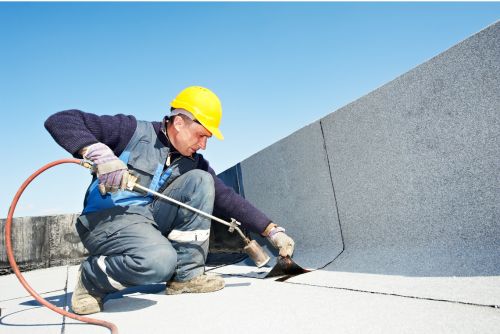
Investing in a quality TPO roofing system provides numerous benefits, including energy efficiency, durability, and cost-effectiveness. Let’s explore some of the advantages of choosing a TPO roofing system for your commercial building.
Choosing a TPO roofing system for your commercial building offers several advantages over other roofing options. Here are some key reasons to opt for a TPO roof system:
When it comes to protecting your TPO roof investment, it is essential to work with a reputable commercial roofing company NJ. Professional roofing contractors, experienced in TPO roofs, understand the unique requirements and challenges of commercial roofing systems. Here’s why choosing a quality commercial roofing company is important:
Quality commercial roofing companies play a crucial role in preventing TPO roof leaks and ensuring the longevity of your roofing system. Here are some key points regarding the role of commercial roofing companies:
Protecting your TPO roof investment requires proactive maintenance and care. By implementing simple measures and working with experienced roofers, you can extend the lifespan of your TPO roof. Consider the following strategies:
Preparing your TPO roof for the next big storm is essential for preventing water damage and maintaining a safe and secure commercial building. Here are some points to consider:
In conclusion, it is essential to understand the common issues with TPO roofing and how water can penetrate the membrane. Regular roof inspections and maintenance are crucial for preventing leaks and water damage. Investing in a quality TPO roofing system offers numerous benefits such as durability, energy efficiency, and cost-effectiveness. It is important to choose a reputable commercial roofing company that specializes in TPO roofing systems to ensure proper installation and maintenance. By taking proactive measures to protect your TPO roof investment, such as regular cleaning of gutters, roof surface maintenance, and flashing repair, you can extend the lifespan of your roof and prevent leaks. Don’t wait until the next big storm hits – make sure your TPO roof is ready to withstand any weather conditions.